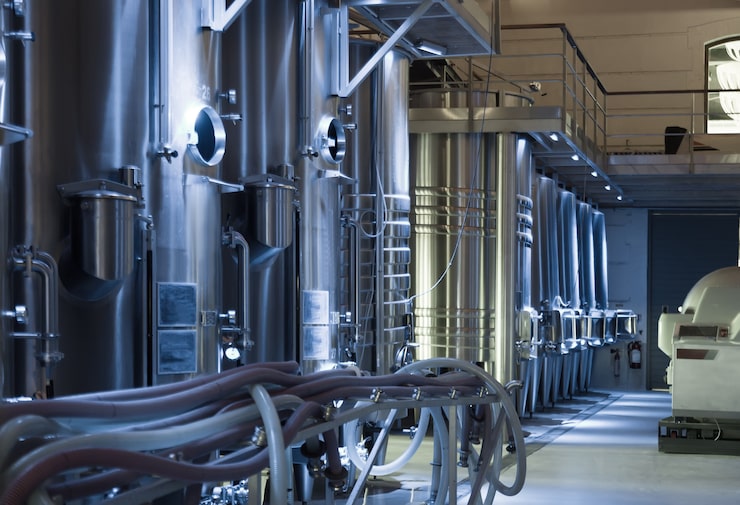When people ask how is metal pipe extruded, they are referring to a manufacturing process where solid metal billets are transformed into hollow cylindrical shapes through a combination of heat, pressure, and precision tooling. This process is widely used to produce seamless pipes for industries such as oil and gas, automotive, aerospace, and construction. Understanding the extrusion of metal pipes involves knowing the types of extrusion, the equipment used, the choice of materials, and the key factors that determine the final pipe’s quality and performance.

Understanding the concept of metal pipe extrusion
Metal pipe extrusion is a plastic deformation process in which a heated metal billet is forced through a specially designed die to create a continuous hollow section. Unlike welding or roll forming, extrusion produces seamless pipes without joints, which results in higher strength and resistance to pressure. This is especially critical in applications that demand durability under extreme temperatures or corrosive environments.
Types of extrusion used for metal pipes
There are several methods for extruding metal pipes, each with specific advantages:
Direct extrusion – The billet is pushed through the die in the same direction as the ram force. This is the most common approach for aluminum, copper, and certain steel grades.
Indirect extrusion – The die moves toward the billet, and the material flows in the opposite direction to the ram. This method reduces friction, leading to smoother surfaces and less tool wear.
Hot extrusion – The billet is heated to a temperature where it becomes more ductile, making it easier to shape. Hot extrusion is preferred for metals like steel, titanium, and nickel alloys.
Cold extrusion – Carried out at or near room temperature, cold extrusion improves dimensional accuracy and surface finish, but requires higher force.
Step-by-step process of metal pipe extrusion
The extrusion process generally follows these stages:
Billet preparation – A solid cylindrical billet is cut to the correct size and preheated if hot extrusion is required. Preheating temperatures vary depending on the metal type to ensure optimal ductility.
Lubrication – To reduce friction between the billet, container, and tooling, lubricants such as glass powder (for hot steel) or oil-based compounds (for aluminum) are applied.
Piercing or mandrel insertion – To create the hollow center, a piercing tool or a fixed mandrel is positioned before extrusion begins.
Extrusion through the die – The billet is forced under high pressure through the die opening, forming a long hollow tube. The die and mandrel determine the wall thickness and outer diameter.
Cooling – Once extruded, the hot pipe is cooled in air or water, depending on the material and desired mechanical properties.
Stretching and straightening – The extruded pipe may undergo stretching to relieve internal stresses and ensure straightness.
Cutting and finishing – Pipes are cut to specified lengths, and surface treatments or coatings may be applied for corrosion resistance.
Metals commonly used in pipe extrusion
Different industries require pipes with specific characteristics, so metal selection is crucial:
Aluminum – Lightweight, corrosion-resistant, and ideal for heat exchangers or aerospace components.
Copper – Excellent thermal and electrical conductivity, widely used in plumbing and electronics.
Steel and stainless steel – High strength, impact resistance, and durability, used in oil pipelines, structural supports, and high-pressure applications.
Titanium – Exceptional corrosion resistance and strength-to-weight ratio, often used in chemical processing and marine industries.
Advantages of extruded metal pipes
The seamless construction of extruded pipes eliminates weak points, providing superior pressure resistance compared to welded alternatives. The process also allows for precise control over dimensions and customized cross-sections, which is essential for specialized engineering applications. Furthermore, extrusion enables long continuous lengths, reducing the need for joints and improving fluid flow efficiency.
Challenges and quality control in extrusion
Producing high-quality extruded pipes requires careful monitoring of temperature control, die design, and billet quality. If the billet is overheated, grain growth can weaken the material. Misaligned tooling can cause uneven wall thickness. Therefore, non-destructive testing methods such as ultrasonic inspection and eddy current testing are often used to detect defects before the pipes are shipped.
Applications of extruded metal pipes
Extruded pipes are essential in oil and gas transmission, boiler manufacturing, hydraulic systems, marine equipment, and aerospace components. The combination of strength, seamlessness, and material flexibility makes them a preferred choice for projects where safety and performance are critical.


